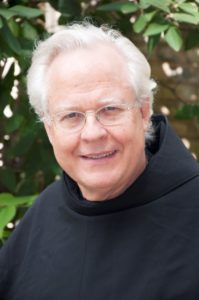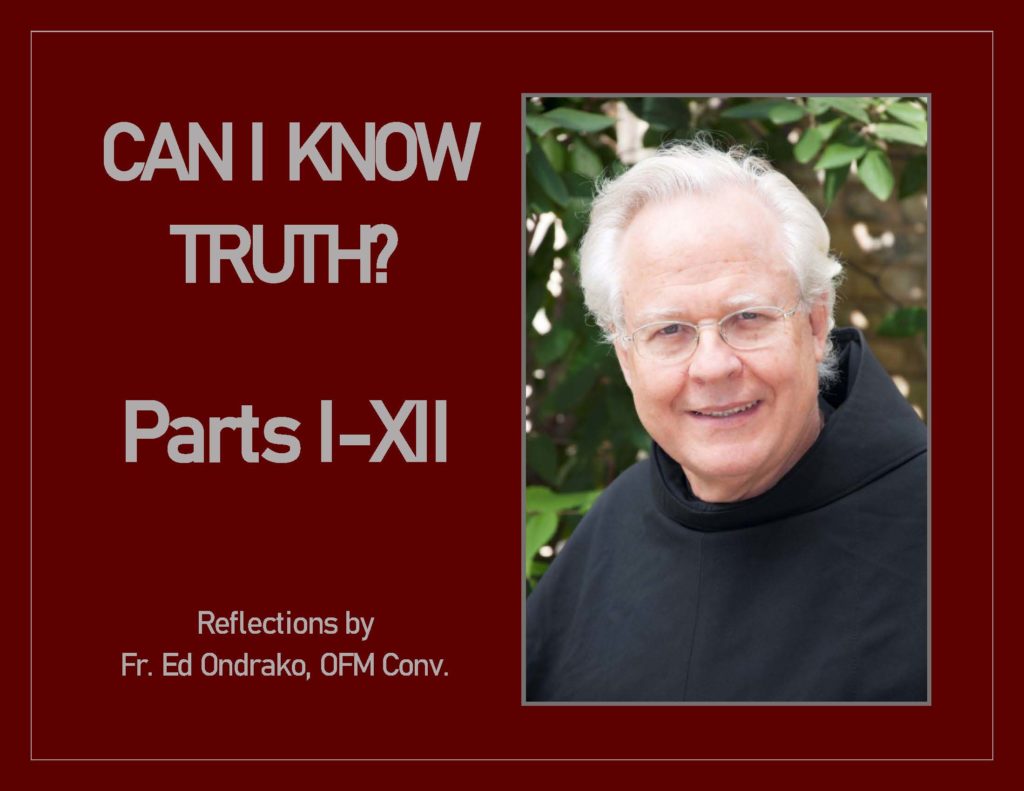CAN I KNOW TRUTH?
(Part Twelve: FROM VATICAN II TO A NEW CLARITY IN THE CHURCH’S MISSION)
12 Days on Pilgrimage in August
“I am the way, and the truth, and the life” (Jn. 14:6).
Pope Emeritus Benedict XVI’s insight is that “in Vatican II the question of the Church in the world became the real central problem.”[1] He explains the critical reconsideration of the concept of the Church as the mystical body of Christ as having passed its peak.[2] In this situation, he wrote his dissertation on “People and House of God in Augustine’s Doctrine of the Church.” About the same time, Fr. Peter Damian Fehlner, OFM Conv. wrote his dissertation: “The Role of Charity in the Ecclesiology of St. Bonaventure.” Two great contemporary thinkers inspire me to write with an eye on the new situation that has arisen for the Church in the world.
CAN I KNOW TRUTH was an inspiration during our Marian Franciscan Pilgrimage from 14 – 23 August beginning in Prague, St. Vitus Cathedral (Hradčany), Our Lady of Victory Church and the miraculous statue of the Infant of Prague, Franciscan Church, to Altӧtting, Munich, Marienplatz, Ettal, the historic Passion Play at Oberammergau, Salzburg, Melk, Mariazell, Vienna, Bratislava, Esztergom, and Budapest. Now it is time to turn to the new situation in which we twenty-eight pilgrims find ourselves. Would you agree that “the question of the Church in the world” moved us to participate, or was at least a hidden motive? Faith raises questions in the brave new world. Our families engaged with theirs; it is time for our engagement.
After Prague, we admired the beauty of Bavaria where Pope Emeritus Benedict XVI was born and prayed at the Shrine he loves, Our Lady of Altӧtting. No doubt you agree with him that the question of “the Church in the world,” on the one hand, is lashed by secular modernity, and, on the other, the wider spiritual dimension of the concept of the Church is joyfully perceived. The question of the meaning of “the Church in the world” includes the realism of faith and its Catholic institutions throughout the world. Remember, public opinion immediately after Vatican II astonished those whose personal degrees of belief and unbelief desired the Church and its faith to be recognized, so long as its faith was considered beautiful, and in a harmless place.[3]
“Keep your beautiful Catholic faith harmless” is the mantra buffeting the Church today. I will critique that mantra by engaging key elements of the Church in the world, interpret them with a positive and a negative perspective, and be alert to what is past peak. Defining secular modernity, according to my wise sister, Frances, is the starting point. Secular modernity is readily visible in the 1690’s in the thought of the philosopher John Locke. Think of Sts. Francis of Assisi, Bonaventure and Bl. John Duns Scotus as living during pre-modernity, and Locke as living in modernity. The origins of our U.S. Constitution (1787) are connected to Locke.[4]
A second chapter to CAN I KNOW TRUTH? will change the subtitle from “12 Days on Pilgrimage in August”, to “The Church in the World.” Unlimited resources will open up: the Bible, Socrates, Plato, Aristotle, from Sts, Ignatius, Irenaeus, Gregory of Nyssa, Augustine to John Henry Newman, Maximilian M. Kolbe, Popes John XXIII, Paul VI, John Paul II, Pope Emeritus Benedict XVI, the Franciscan School as sketched by Fr. Peter Damian Fehlner, OFM Conv.,[5] and others, such as Charles Taylor. Pope Francis, the first named after St. Francis, focuses on the Church of the poor, mercy, synodality, and integral human development for everyone.
Twelve reflections have shown me what direction to take. Being with you on pilgrimage made us critically reconsider dimensions of the universal Church for our day. With Pope Emeritus Benedict, we agree that the important concept of the Church as the mystical body of Christ was awakening in souls and has passed its peak. You will agree with him about the concept of the Church, for its part, not missing the realism of faith and how it is lived or not throughout the world. We aspire for a Church whose ecclesiology has not passed its peak.
Our 12 Days of Pilgrimage gave birth to experiences in preparation for engagement with the question of the Church in the world. One pilgrim came from the Anglican Church which gave an ecumenical tone. There were two astrophysicists; two lawyers; a research historian; a speech pathologist; a linguist; several in the business world; a widower increasing belief in his wife’s presence; a math teacher and writer; a widow praying for her family’s faith, who is a teacher and active with the poor; a confessor at the Vatican; administrators in government and the Church; and a theologian studying the “gift of modernity.” All prayed for our families, friends and communities, living and grieving our deceased. We shared insight into how the forces of secular modernity evacuates faith. A transition is to “The Church in the World.”
Kierkegaard’s counsel to one who intended to write a book was to consider carefully the subject about which he wished to write, to acquaint himself as far as possible with what has already been written on the subject, for he might meet an individual who had dealt exhaustively and satisfactorily with one or another aspect of that subject, and would do well to rejoice as does the bridegroom’s friend who stands by and rejoices greatly as he hears the bridegroom’s voice. “When he has done this in complete silence and with the enthusiasm of a love that ever seeks solitude, nothing more is needed; then he will carefully write his book as spontaneously as a bird sings its song, and if someone derives benefit or joy from it, so much the better.”[6]
“O brave new world!”—it is brave, but is it human?[7] Know the answer yourself.
Fr. Ed Ondrako, OFM Conv., Univ of Notre Dame, eondrako@alumni.nd.edu
________________________
[1] Pope Benedict XVI, Letter to Rev. Father Dave Pivonka, TOR, President, Franciscan University of Steubenville, 7 October 2022.
[2] Pope Pius XII, Mystici Corporis, encyclical, 1943.
[3] Pope Benedict XVI, Letter to Rev. Father Dave Pivonka, TOR, President, Franciscan University of Steubenville, 7 October 2022. This is a rare public statement of the Holy Father Emeritus.
[4] J. Locke, Essay Concerning Human Understanding, Reasonableness of Christianity, Ltr. on Toleration.
[5] P. D. Fehlner names a double gift from Vatican II: Sources of Revelation (Dei Verbum); and the development of doctrine throughout. I found a third gift within both: “The Blessed Virgin Mary, Mother of God, in the Mystery of Christ and of the Church” (Lumen Gentium, ch. 8). Three for one.
[6] S. Kierkegaard, The Concept of Anxiety (Princeton: Princeton University Press, 1980), 7, Preface.
[7] Miranda from Shakespeare’s, The Tempest. Aldous Huxley, Brave New World, 1932.


